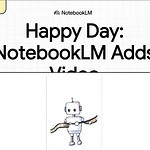October 23, 2024
Anthropic's latest experimental release, the "computer use" feature, embedded in its Claude 3.5 model, brings AI automation to a new frontier. Unlike traditional models that generate text, "computer use" allows AI to interact with software like a human, navigating, clicking, typing, and managing tasks across applications. Although limited to developers for now, this capability represents a step toward more general-purpose AI agents, enabling streamlined workflows and real-world automation in previously untapped areas.
What is "Computer Use?"
The experimental "computer use" feature allows Claude 3.5 to physically interact with a computer's interface—opening files, navigating folders, or even managing emails. This means that Claude can execute specific tasks by actually simulating how a person would operate software. Imagine asking an AI to open your Photos folder, sort pictures by date or event, and create new folders for organization. While we've seen AI assist with decision-making or generating content, this hands-on capability makes it an “agent” that can directly complete tasks.
How Is This Different?
The big differentiator here is that this feature goes beyond traditional AI tasks like language generation or single-function automation (e.g., sending an email or running a script). "Computer use" provides the AI with the ability to interact directly with a computer's user interface, mimicking human actions. Many AI agents today are limited by their environment—working only within specific apps or operating under strict user supervision. Claude 3.5's capability bridges this gap, providing a more flexible and dynamic approach to task automation.
This is a significant jump because the AI isn't just processing information—it’s managing and executing tasks across multiple programs. It can combine things like organizing files, generating reports, or even filling out forms on websites—all within one workflow.
Here is an example of "Computer use for coding" as shown by a Developer at Anthropic.
Why It’s Significant for the Future of AI Agents
By moving into this territory, Anthropic is inching closer to the vision of AI as a truly general-purpose agent. AI could potentially handle routine tasks on computers, from organizing folders, managing emails, and even making appointments, to navigating complex software. This would allow users—whether individuals or businesses—to save time on mundane tasks and focus on higher-level decision-making.
Although it’s in an experimental phase and restricted to developers for testing, the implications are exciting. As the feature evolves, AI could become a true digital assistant, handling much more than just language-based tasks.
Here is a researcher at Anthropic showing “computer use for orchestrating tasks.”
Challenges and Future Outlook
While the possibilities are vast, there are still challenges. Since this is an experimental feature, Anthropic is gathering feedback from developers to refine its performance. The model will need to navigate the delicate balance of automation and user control—ensuring that the AI acts autonomously but doesn’t overstep, especially when dealing with sensitive data. Additionally, robust safeguards are needed to ensure the AI follows proper guidelines and maintains security.
As "computer use" develops, it could reshape the way AI agents are integrated into everyday workflows, expanding from digital assistance into more autonomous, agent-like interactions with our devices.
Final Thoughts
Anthropic’s "computer use" feature is a bold step toward creating AI agents that do more than think—they act. With the capability to interact with software and applications like a human user, this could unlock new levels of productivity and automation. Although still experimental, it’s a glimpse into a future where AI agents perform hands-on tasks seamlessly, freeing humans from repetitive computer work.
Note: The podcast attached to this article was created with a NotebookLM Advanced "Audio Overview." The overview was based on Anthropic's October 22nd blog. I set the following custom instructions: "Explain computer use so it is both understandable to beginners and interesting to those very familiar with the subject material."
I'm a retired educator and freelance writer who loves researching AI and sharing what I've learned.
Stay Curious. #DeepLearningDaily
Additional Resources For Inquisitive Minds:
Anthropic blog. Introducing computer use, a new Claude 3.5 Sonnet, and Claude 3.5 Haiku. (October 22, 2024.)
Vocabulary Key:
Agent-like AI: AI that can operate independently, completing tasks without constant user oversight.
Autonomous: The ability to perform tasks without needing direct human intervention.
Workflow: A series of steps or tasks completed to achieve a goal.
Interface: The environment where a user interacts with a computer, such as software or apps.
FAQs:
What is the "computer use" feature? It's an experimental tool allowing AI to physically interact with computers—typing, clicking, and navigating screens like a human.
How does it differ from existing AI automation? Unlike standard AI models, "computer use" can perform tasks across various applications, managing workflows with minimal human input.
What tasks can it automate? Examples include organizing files, managing emails, filling out forms, or scheduling appointments.
Who can use this feature? It's currently available to developers for testing and feedback, with broader release expected in the future.
What are the future implications of this technology? It could transform AI from being a tool for generating content into a versatile digital assistant capable of executing complex, hands-on tasks.
#AI #DeepLearning #Anthropic #Automation #AIagents #Claude3_5 #TechInnovation #FutureOfWork #DigitalAssistants














Share this post